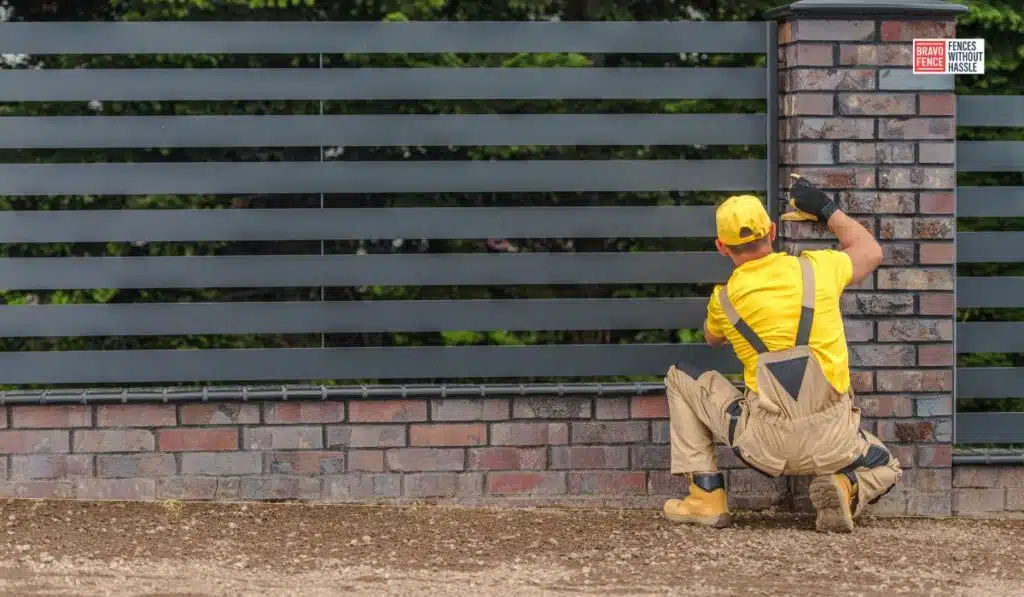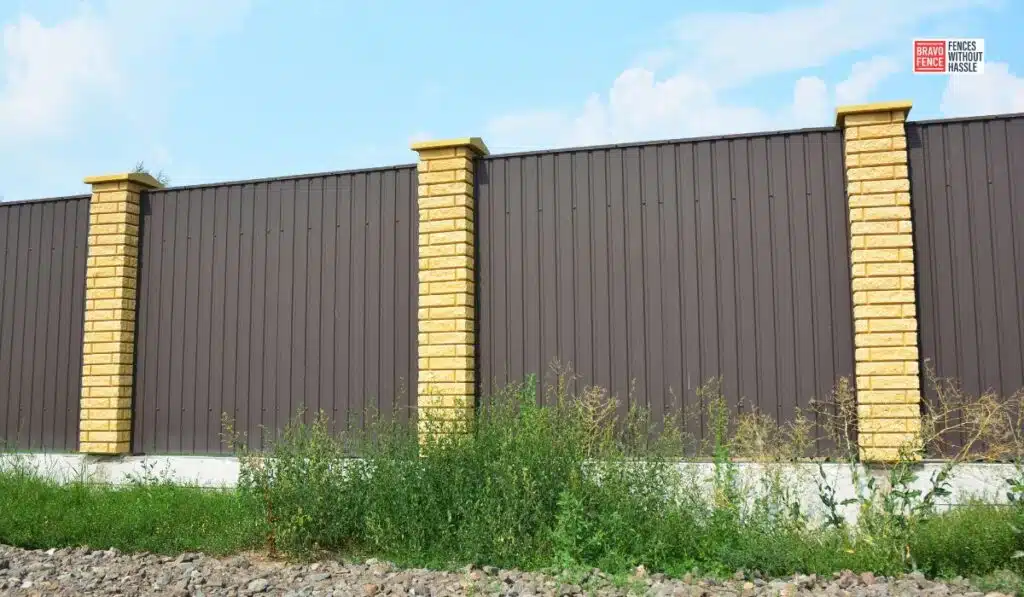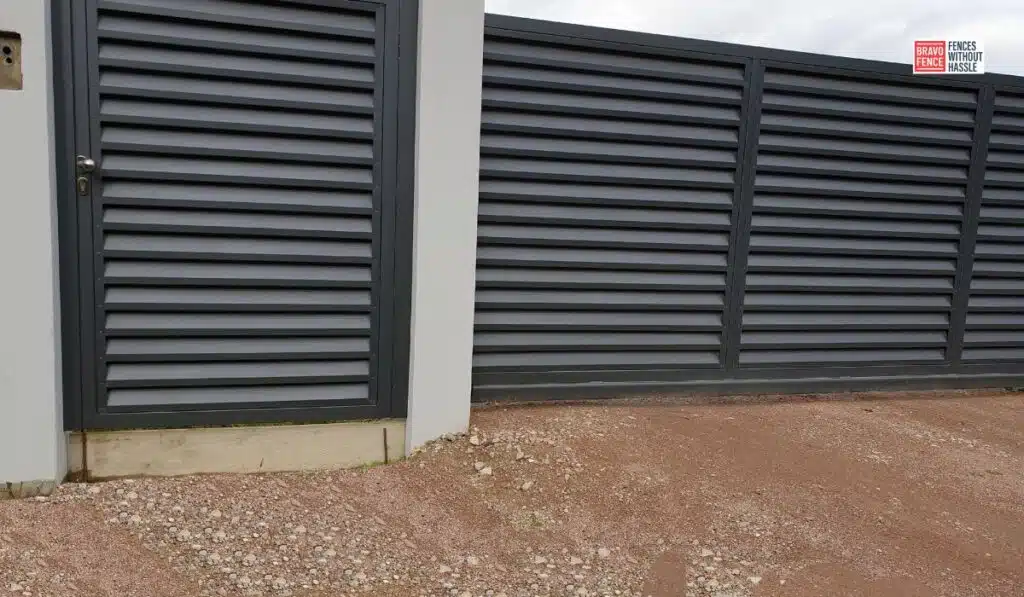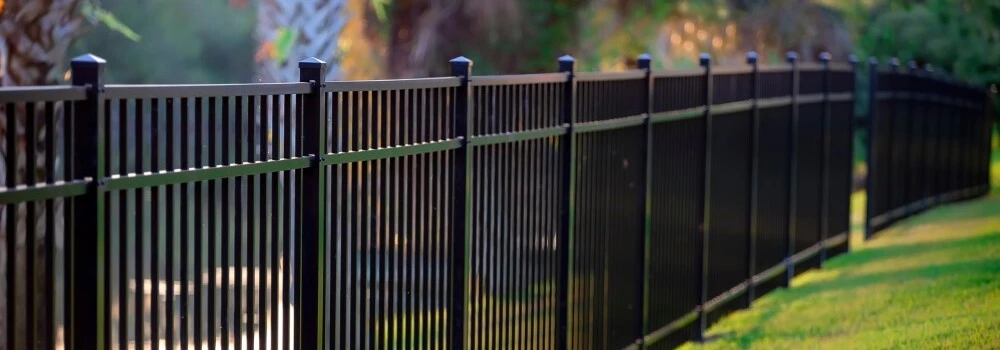
Maintenance Tips for Keeping Your Outdoor Metal Fence Looking New
Outdoor metal fences are a popular choice for homeowners and property managers due to their durability, security, and aesthetic appeal.
However, like any outdoor structure, they require regular maintenance to keep them looking their best and functioning properly.
Exposure to the elements can lead to issues such as rust, fading, and structural damage. By following a comprehensive maintenance routine, you can extend the life of your metal fence and keep it looking new for years to come.
This guide will cover various maintenance tips, including cleaning, painting, rust prevention, lubrication, vegetation management, structural repairs, and seasonal maintenance.
Regular Cleaning
One of the most basic yet essential maintenance tasks for your metal fence is regular cleaning.
Dirt, grime, and organic matter can accumulate on the surface, leading to corrosion and unsightly stains over time.
Steps for Cleaning:
Remove Loose Debris: Start by using a soft brush or cloth to remove loose dirt, leaves, and other debris from the fence.
This initial step prevents scratching the metal surface during washing.
Wash with Mild Soap and Water: Prepare a mixture of mild detergent and water.
Using a sponge or cloth, gently scrub the fence to remove accumulated dirt and grime.
Avoid using harsh chemicals as they can damage the metal’s finish and promote rust.
Rinse Thoroughly: After scrubbing, rinse the fence thoroughly with clean water to remove any soap residue.

Soap residue can attract more dirt and potentially cause staining.
Dry the Fence: Use a dry cloth to wipe down the fence.
This step is crucial to prevent water spots and reduce the risk of rust formation.
Regular cleaning not only keeps your fence looking great but also helps you spot potential issues early, allowing for timely intervention.
Inspect for Damage
Regular inspections are vital for identifying and addressing potential problems before they become significant.
Inspecting your fence at least once a season can help you catch issues like rust, peeling paint, and structural damage early on.
What to Look For:
Rust and Corrosion: Examine the fence for rust spots, especially in areas where water might accumulate.
Rust can spread quickly if not treated, compromising the fence’s structural integrity.
Paint Damage: Look for peeling or chipping paint.
Damaged paint can expose the metal to the elements, accelerating rust and corrosion.
Structural Issues: Check for loose or damaged parts such as screws, bolts, and welds. Ensure that all components are secure and in good condition.
Regular inspections allow you to maintain the fence’s appearance and functionality by addressing minor issues before they escalate into more significant problems.
Rust Prevention and Treatment
Rust is the biggest enemy of metal fences.
Preventing rust and treating it promptly when it appears is crucial for maintaining the fence’s appearance and structural integrity.
Preventive Measures:
Apply a Rust Inhibitor: Regularly applying a rust-inhibiting primer or spray can protect the fence from moisture and oxidation.
These products create a barrier that prevents rust from forming.
Keep the Fence Dry: Ensure proper drainage around the fence to prevent water from pooling at the base.
Standing water can accelerate rust formation.
Treating Rust:
Sand the Rusted Area: Use sandpaper or a wire brush to remove rust from the affected area.
Be thorough to ensure all rust is removed, as any remaining rust can continue to spread.
Apply Rust Converter: A rust converter chemically transforms rust into a stable compound that can be painted over.
This step helps to stop rust progression and prepares the surface for painting.
Repaint the Area: After treating the rust, repaint the area with high-quality metal paint. Apply a rust-inhibiting primer first, followed by two coats of paint for optimal coverage and protection.
Addressing rust promptly and effectively can significantly extend the lifespan of your metal fence.
Repainting the Fence
Repainting your metal fence not only enhances its appearance but also provides a protective layer against the elements.
Over time, exposure to sun, rain, and wind can cause paint to fade or chip, making repainting a crucial maintenance task.
Steps for Repainting:
Prepare the Surface: First, clean the fence thoroughly to remove dirt, grime, and loose paint.
Sand down rough spots and rusted areas to create a smooth surface for the new paint to adhere to.
Apply Primer: Use a rust-inhibiting primer to create a base layer that will help the paint adhere better and last longer.
The primer also provides an additional layer of protection against rust.
Paint the Fence: Choose a high-quality exterior metal paint designed to withstand the elements.
Apply the paint evenly using a brush or spray. For the best results, apply two coats of paint, allowing the first coat to dry completely before applying the second.
Let it Dry: Allow the paint to dry completely between coats and before using the fence.
This step ensures a durable and long-lasting finish.
Repainting not only revitalizes the look of your fence but also provides essential protection against rust and weather damage.
Lubricating Moving Parts
If your fence has gates or other moving parts, regular lubrication is necessary to ensure smooth operation and prevent wear and tear.
Proper lubrication can extend the life of hinges, locks, and other mechanical components.
How to Lubricate:
Clean the Hinges: Remove dirt and debris from the hinges and other moving parts.
Use a brush or cloth to ensure they are clean before applying lubricant.
Apply Lubricant: Use a high-quality lubricant designed for metal, such as silicone spray or WD-40. Apply the lubricant to the hinges, locks, and other moving parts.
Operate the Gate: Open and close the gate several times to distribute the lubricant evenly. This step helps ensure that all moving parts are properly lubricated and functioning smoothly.
Regular lubrication not only keeps your fence operating smoothly but also helps prevent rust and wear on moving parts.
Protecting Against Vegetation
Plants and vines can enhance the look of your metal fence, but they can also cause damage if not appropriately managed.
Vegetation can trap moisture against the metal, leading to rust and corrosion.
Managing Vegetation:
Trim Regularly: Keep plants and vines trimmed and away from direct contact with the fence.
Regular trimming prevents moisture buildup and reduces the risk of rust.
Choose Suitable Plants: Opt for plants that do not cling tightly to the fence or hold excessive moisture.
Plants with non-invasive root systems and minimal moisture retention are ideal.
Install Barriers: Use plastic or rubber barriers between the fence and any climbing plants to prevent direct contact.
Barriers help keep moisture away from the metal surface.
By managing vegetation effectively, you can enjoy the aesthetic benefits of plants without compromising the integrity of your metal fence.
Addressing Structural Issues
Over time, your metal fence may develop structural issues such as bent sections, loose posts, or broken parts.
Addressing these issues promptly is crucial for maintaining the fence’s integrity and appearance.
Fixing Structural Issues:
Straighten Bent Sections: Use a hammer or mallet to straighten bent sections of the fence gently.
Be careful not to cause additional damage while straightening.
Secure Loose Posts: Check the stability of the posts and secure any that are loose with concrete or additional fasteners.
Properly anchored posts are essential for the overall stability of the fence.
Replace Broken Parts: Replace any broken or severely damaged parts of the fence with new ones.
This step is vital to maintain the fence’s strength and appearance.
Regularly addressing structural issues ensures that your fence remains secure and visually appealing.

Seasonal Maintenance
Different seasons bring different challenges for maintaining your metal fence.
Implementing seasonal maintenance routines can help keep your fence in top condition year-round.
Seasonal Tips:
Spring: Inspect the fence for winter damage, clean thoroughly, and touch up any paint or rust issues.
Spring is an excellent time to address any damage caused by harsh winter conditions.
Summer: Protect the fence from sun damage by applying a UV-resistant coating if necessary.
The intense summer sun can fade paint and cause the metal to expand, leading to potential damage.
Fall: Clear fallen leaves and debris that can trap moisture against the fence.
Removing debris helps prevent rust and keeps the fence looking clean.
Winter: Remove snow and ice buildup to prevent rust and structural damage.
Heavy snow and ice can put additional stress on the fence and lead to rust formation.
Seasonal maintenance routines help address specific challenges posed by different weather conditions, ensuring your fence remains in excellent condition year-round.
Professional Maintenance
While regular DIY maintenance is effective, professional maintenance can provide a deeper level of care and ensure your fence remains in excellent condition.
Benefits of Professional Maintenance:
Expertise: Professionals can identify and address issues that may not be obvious to the untrained eye.
Their expertise ensures that all aspects of the fence are properly maintained.
Advanced Treatments: Access to professional-grade treatments and equipment for rust removal, painting, and repairs.
These advanced treatments can provide longer-lasting results than DIY methods.
Time-Saving: Save time and effort by allowing experts to handle the maintenance. Professional maintenance can be more efficient and thorough, freeing up your time for other activities.
Hiring professionals for periodic maintenance can ensure that your metal fence receives the best possible care and remains in top condition.
Conclusion:
Maintaining your outdoor metal fence requires consistent effort, but the rewards are well worth it. A well-maintained fence not only looks great but also lasts longer and provides better security.
By following these maintenance tips—regular cleaning, inspecting for damage, preventing and treating rust, repainting, lubricating moving parts, managing vegetation, addressing structural issues, and performing seasonal maintenance—you can keep your metal.
Contact Bravo Fence Company today to explore your options and schedule a consultation with our experienced team of fencing experts.
FAQs
How often should I clean my metal fence?
Ideally, you should clean your metal fence every 3-6 months to prevent dirt buildup and minimize the risk of rust and corrosion.
Can I use any paint on my metal fence?
No, it’s essential to use high-quality exterior metal paint specifically designed for outdoor use. These paints provide better protection against the elements and last longer.
What should I do if I find rust on my fence?
If you find rust, sand the affected area, apply a rust converter, and repaint it with a rust-inhibiting primer and paint. Addressing rust promptly prevents it from spreading and causing more damage.
How can I prevent my fence from rusting?
To prevent rust, regularly clean your fence, apply rust inhibitors, ensure proper drainage around the wall, and inspect for and repair any damage promptly.
Tags: Complete Guide to Aluminum Fence, Complete Guide to Metal Fence Durability, Complete Guide to Metal Fence Panels, Complete Guide to Outdoor Metal Fence Designs, Everything You Need to Know About Metal Fence Installation, Explore Helpful Resources on Wrought Iron Fence, Inspiration and Tips on Iron Fencing, Inspiration and Tips on Metal Fence Cost, Inspiration and Tips on Metal Fence Gates, Inspiration and Tips on Steel Fence

